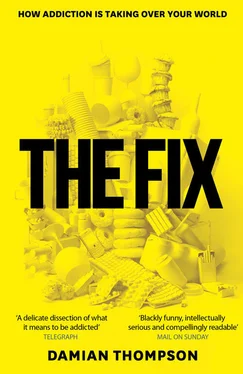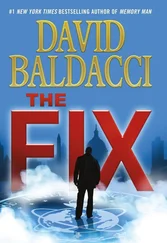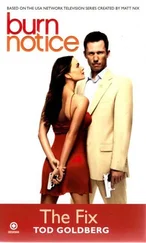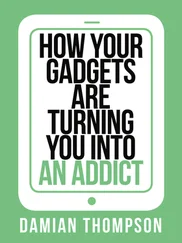As for the counsellors, they kept talking about ‘the illness’. Your illness, my illness. ‘My illness tells me I’m a bad person.’ The reason for this emphasis was that ‘it’s a shame-based illness’, and the whole point is to get away from the idea that you’ve been a wicked person and you should be ashamed – such ‘stinking thinking’ might cause you to fall into a ‘shame spiral’, and shame leads you to ‘pick up’ the next drink or drug.
You’d absorb the illness chat pretty quickly, but I could never bring myself to talk in terms of ‘my illness’ – it just seemed too pat and convenient to take away responsibility and turn your addiction into something outside yourself.
Addiction specialists would reply that of course they’re not saying the disease is ‘outside’ people. But the way they talk about addicts sometimes implies that sufferers are under the control of a malign puppetmaster.
There are recognised brain diseases which, like addiction, manifest themselves as behaviour – the jerking limbs of Huntingdon’s, for example. But it’s a funny sort of primary, chronic, brain disorder that makes you drive yourself to the pub, sink seven pints of beer with whisky chasers, and then drive yourself back, turning your car into a weapon of mass destruction.
In fact, there’s a world of difference between involuntary, chaotic spasms and long sequences of actions that look perfectly voluntary, if misguided, to anyone observing them. Professor John Booth Davies, director of the Centre for Applied Social Psychology at the University of Strathclyde – and one of Britain’s most prominent opponents of the disease model – makes the point that if a disease can force people to steal, to lift up glasses, or to stick needles in their arms when they’re actually trying not to, then any goal-directed behaviour could be a symptom of disease. 8 Конец ознакомительного фрагмента. Текст предоставлен ООО «ЛитРес». Прочитайте эту книгу целиком, купив полную легальную версию на ЛитРес. Безопасно оплатить книгу можно банковской картой Visa, MasterCard, Maestro, со счета мобильного телефона, с платежного терминала, в салоне МТС или Связной, через PayPal, WebMoney, Яндекс.Деньги, QIWI Кошелек, бонусными картами или другим удобным Вам способом.
The behaviour of addicts looks voluntary because it is. However intense the temptations offered by substances and experiences, there will always be people who, having given in to them, change their mind and pull themselves out of addiction.
As we’ve seen, AA brushes aside this phenomenon with unbreakable circular logic: if you cure yourself, you were never an addict. Medically qualified addiction specialists basically agree, though they usually espouse a more nuanced version of the disease theory. They don’t deny that some addicts appear to cure themselves – but they treat such cases as outliers or questionable diagnoses. The official line remains that, to quote the Sourcebook on Substance Abuse, ‘the majority of individuals who receive treatment for substance abuse relapse’. 9 Конец ознакомительного фрагмента. Текст предоставлен ООО «ЛитРес». Прочитайте эту книгу целиком, купив полную легальную версию на ЛитРес. Безопасно оплатить книгу можно банковской картой Visa, MasterCard, Maestro, со счета мобильного телефона, с платежного терминала, в салоне МТС или Связной, через PayPal, WebMoney, Яндекс.Деньги, QIWI Кошелек, бонусными картами или другим удобным Вам способом.
Clinical reports that between 50 and 60 per cent of patients relapse within six months of ending treatment are accepted as evidence of the power of the disease.
There’s something wrong with this methodology, however, as Gene M. Heyman, a hospital research psychologist and lecturer at Harvard University, points out.
‘Most research is based on addicts who come to clinics,’ he says. ‘But these are a distinct minority, and they are much more likely to keep using drugs past the age of 30 – probably because they have many more health problems than non-clinic addicts. They are about twice as likely to suffer from depression, and are many times more likely to have HIV/AIDS. These problems interfere with activities that can successfully compete with drug use. Thus, experts have based their view of addiction on an unrepresentative sample of addicts.’ 10 Конец ознакомительного фрагмента. Текст предоставлен ООО «ЛитРес». Прочитайте эту книгу целиком, купив полную легальную версию на ЛитРес. Безопасно оплатить книгу можно банковской картой Visa, MasterCard, Maestro, со счета мобильного телефона, с платежного терминала, в салоне МТС или Связной, через PayPal, WebMoney, Яндекс.Деньги, QIWI Кошелек, бонусными картами или другим удобным Вам способом.
Heyman went looking for large-scale studies of addiction in the US based on more representative samples of addicts in the general population, not just in clinics. He found four of them, carried out by leading researchers and funded by national health institutes. 11 Конец ознакомительного фрагмента. Текст предоставлен ООО «ЛитРес». Прочитайте эту книгу целиком, купив полную легальную версию на ЛитРес. Безопасно оплатить книгу можно банковской картой Visa, MasterCard, Maestro, со счета мобильного телефона, с платежного терминала, в салоне МТС или Связной, через PayPal, WebMoney, Яндекс.Деньги, QIWI Кошелек, бонусными картами или другим удобным Вам способом.
Yet, mysteriously, the clinical texts and journal articles spreading the message of a ‘primary, chronic, relapsing disease’ fail to mention these epidemiological studies. Why?
Could it have been because none of the surveys found that most addicts eventually relapse? What they suggested, inconveniently, was that between 60 and 80 per cent of individuals who met the criteria for lifetime addiction stopped using drugs in their late twenties or early thirties. In short, high remission rates would seem to be a stable feature of addiction. 12 Конец ознакомительного фрагмента. Текст предоставлен ООО «ЛитРес». Прочитайте эту книгу целиком, купив полную легальную версию на ЛитРес. Безопасно оплатить книгу можно банковской картой Visa, MasterCard, Maestro, со счета мобильного телефона, с платежного терминала, в салоне МТС или Связной, через PayPal, WebMoney, Яндекс.Деньги, QIWI Кошелек, бонусными картами или другим удобным Вам способом.
In 1970 there was a shockingly sudden burst of heroin addiction among GIs in Vietnam. As Alfred McCoy describes in his book The Politics of Heroin, until 1969 the ‘Golden Triangle’ of south-east Asia was harvesting nearly a thousand tons of raw opium annually – but there were no laboratories capable of turning it into high-grade heroin. That changed when Chinese master chemists from Hong Kong arrived in the region. Suddenly South Vietnam was full of fine-grained No. 4 heroin instead of the impure, chunky No. 3 grade.
Читать дальше












